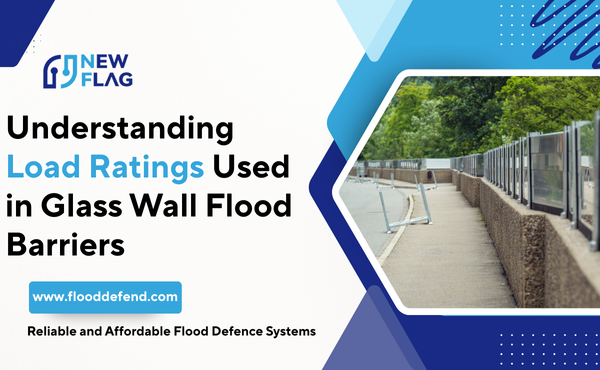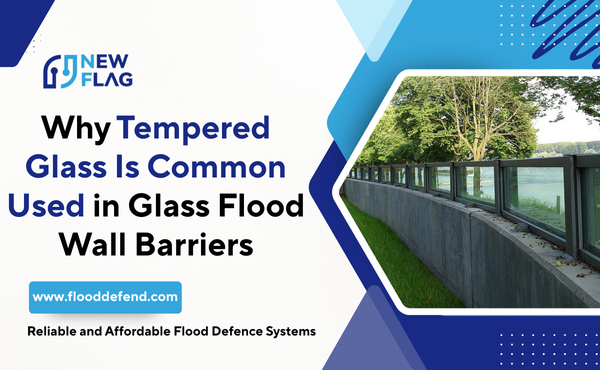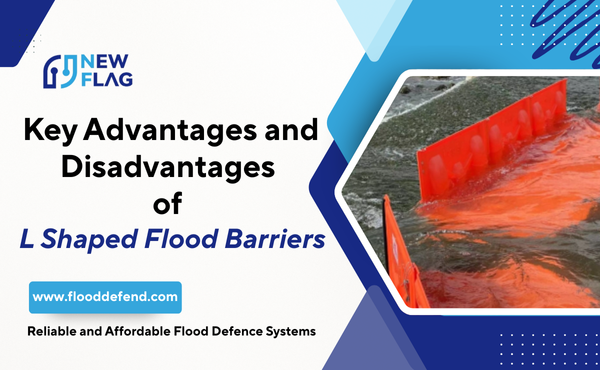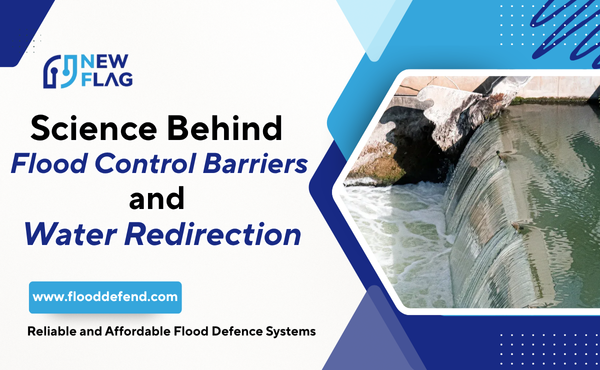As cities grow, waterfronts become prized real estate, and urban landscapes are designed not just for function, but for aesthetics, safety, and public amenity. Flood events—whether from storm surges, rising rivers, or extreme rainfall—pose increasing risk. Traditional solid flood walls can feel heavy, obstruct views, and clash with architectural or environmental design priorities. This is where glass wall flood barriers are emerging as a powerful alternative: combining protection, permanence, transparency, and aesthetic integration.
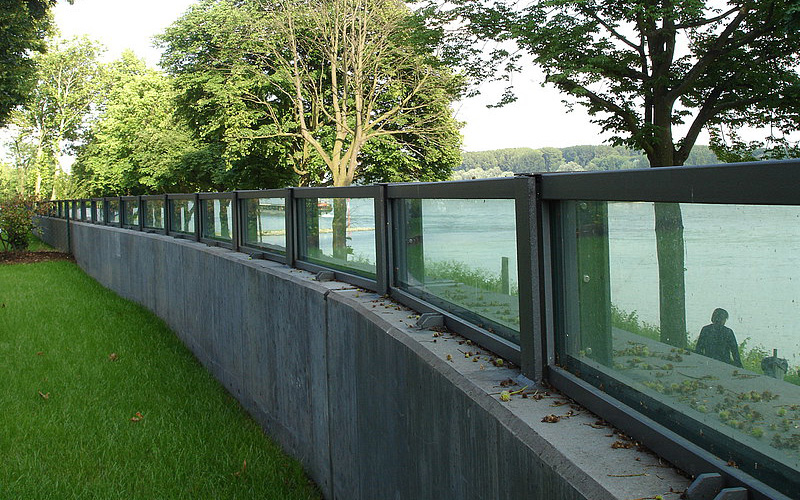
Let’s explore what glass wall flood barriers are, how they work, their strengths, potential drawbacks, and why they’re increasingly the go-to solution in forward-looking urban flood defense.
What Are Glass Wall Flood Barriers?
Glass wall flood barriers are fixed, permanent flood defense structures built with laminated safety glass panels set into engineered frames (usually aluminum or similar) with high-quality seals, anchored to a foundation, and designed to resist water pressure and debris. Unlike temporary or demountable flood barriers, once installed they remain in place — ready to defend at all times, without the need for deployment, storage, or manual activation.
The NEWFLAG NF-35G Glass Wall Flood Barrier is a prominent example. NEWFLAG It offers:
-
Permanent structure – no need for assembly or deployment at the onset of flooding. NEWFLAG+1
-
Transparent glass panels that allow unobstructed views. NEWFLAG+1
-
Strong safety glass: triple-layer laminated tempered safety glass, with tear-resistant PVB film between layers, making total thickness roughly 32–43 mm depending on design. If broken, it fragments into small dull pieces to reduce risk. NEWFLAG+2NEWFLAG+2
-
Frame & posts in aluminum alloy (e.g. 6063-T6/T5) with EPDM seals + sealants, anchored with embedded plates to concrete foundations. NEWFLAG+2NEWFLAG+2
Designable spans up to about 3 meters per panel, and heights typically up to 1.2 meters for the glass panels, though effective flood height (with foundation etc.) may go higher. NEWFLAG+1
Key Advantages
Here are the major benefits that make glass wall flood barriers especially suited for modern urban environments:
-
Aesthetic Integration and Transparency
They preserve sightlines. For waterfront promenades, parks, riverwalks, hotels, commercial areas, and heritage or scenic locations, glass allows views to remain unobstructed. They help maintain landscape, scenery, and architectural appeal. NEWFLAG+1 -
Permanent, Always-On Protection
No need for deployment or activation; the barrier is always in place, which means no lag or human error when a flood threat arrives. This is especially important in fast-developing flood events where every minute counts. NEWFLAG+1 -
Low Maintenance Compared to Demountable/Temporary Barriers
Once correctly installed, the maintenance is minimal: primarily surface cleaning and occasional inspection or replacement of glass panes or seals if damaged. There’s no need to store or deploy parts. NEWFLAG+1 -
High Structural Strength & Safety
Laminated safety glass plus well-engineered frames means resistance to hydrostatic pressure, possible debris impact, etc. The safety glass design ensures breakage doesn’t create dangerous shards. NEWFLAG+1 -
Customization & Adaptability
Glass span and height can be tailored to site requirements; posts and glass sizes can adapt to maintain both aesthetic and safety needs. Also, additional aluminum panels (stop-logs) can be added on top of glass to raise flood height in emergencies. NEWFLAG+1 -
Visual Appeal Adds Value
In many urban or tourist environments, maintaining views and openness adds to real estate value, public satisfaction, and usage of public spaces. A barrier that is “transparent” helps reduce the mental and visual burden of flood defenses.
Technical Specs & Design Considerations
If you’re thinking of implementing or specifying a glass wall flood barrier, here are technical and design parameters to check. Using NEWFLAG’s NF-35G as an example helps illustrate.
| Parameter | Example / Guideline | Why It Matters |
|---|---|---|
| Glass Type & Thickness | Triple-layer laminated tempered safety glass; ~32-43 mm thickness. NEWFLAG+1 | Determines strength, impact resistance, bending, risk of breakage, safety. |
| Panel Span & Height | Max single span ~3.0 m width; height up to 1.20 m for glass panels. With foundation and/or added stop-logs, flood protection height could reach ~2 m. NEWFLAG+1 | Larger spans reduce number of posts (better view), but need to ensure posts and frame can handle load. |
| Frame Material & Posts | Aluminum alloy (6063 series), EPDM seals, robust anchor to foundation. Posts sizes vary depending on span & height. NEWFLAG+2NEWFLAG+2 | Must resist corrosion, static & dynamic loads, hold glass securely, and maintain seal. |
| Sealing System | Edge sealants, EPDM between glass and posts, ground seals. NEWFLAG+1 | Prevent seepage; critical point in flood functions is preventing water infiltration at joints. |
| Foundation / Anchoring | Post anchor plates embedded in concrete; ground base support; proper foundation essential. NEWFLAG+1 | Without solid anchoring, flood pressures may dislodge or deform structure. |
| Safety & Failure Mode | If glass breaks, it should shatter safely (without sharp shards). Replacement panels available. NEWFLAG+1 | Ensures human/animal safety. Also ensures repair is feasible without replacing entire structure. |
Potential Limitations / Things to Watch Out For
No solution is perfect, and glass wall flood barriers come with considerations and trade-offs. Understanding these helps ensure you pick the right system and design it appropriately.
-
Higher Initial Cost
Glass + engineered frames + permanent foundation = more expensive upfront than many demountable or temporary options. -
Weight & Installation Complexity
Large laminated glass panels are heavy. Handling, transportation, installation require careful planning, possibly cranes. NEWFLAG+1 -
Fixed Height
Unless designed with flexibility (for example with stop-logs added later), the flood height protection is fixed at specification. If future flood risk increases beyond design, barrier may need modification. -
Visual Maintenance
Although glass is visually appealing, it must be well maintained: cleaning, checking seals, ensuring visibility. Scratches, dirt, or seal failures can detract from both aesthetics and performance. -
Breaking & Replacement
Although safety glass is used, glass can still break (from debris, vandalism, accidents). Replacement must be easy and safe. -
Design & Site Limitations
Curved or irregular terrain may require special posts, curves, or segmented panels. Ground may not be perfectly level. Foundation constraints may limit heights or spans.
Why Glass Wall Barriers Are Especially Suited to Urban Future Scenarios
Given trends in climate, urban design, environmental expectations, and social values, glass wall flood barriers align well with future needs.
-
Climate Change & Rising Flood Risk
Extreme weather events—floods, storm surges—are more frequent. It’s important for defenses to be always ready and resilient. -
Urban Beautification & Landscape Integration
Cities, waterfronts, parks, tourism areas increasingly governed by design, public amenity, preservation of views. Flood defenses that disrupt sightlines, block views, or look like industrial fortifications can be a public relations problem. -
Permanent vs. Temporary Solutions
Temporary solutions are useful, but require storage, deployment, labor; they may fail if deployment delayed. Permanent glass walls avoid those issues. -
Combination Approaches
Glass walls can be combined with other systems (demountable panels, modular flood boards) to adapt to changing risk levels or emergency situations. For example, NEWFLAG’s NF-35G system allows extra stop-log aluminum panels to be mounted on top of glass portion to increase height during emergencies. NEWFLAG -
Regulatory & Insurance Drivers
Many jurisdictions are increasing flood protection standards, requiring greater resilience, and sometimes aesthetic requirements in public projects. Insurance and public safety concerns push for solutions that are durable, proven, and with minimal failure risk.
Case Examples & Use Cases
To make this more concrete, here are some real-life scenarios where glass wall flood barriers make sense:
-
Riverfront Walkways & Parks: Where users want uninterrupted views of water, historical sites, greenways. Glass walls protect from floods, but maintain scenic enjoyment.
-
Beachfront Promenades / Hotel Facades: Where views are a key asset. Glass flood walls protect while preserving luxury experience.
-
Public Utility / Transport Structures by Water: Stations, terminals, boardwalks, where permanent readiness is required and visibility contributes to safety/security.
-
Heritage Buildings or Scenic Districts: Where any barrier must respect visual harmony with the surroundings.
-
Urban Waterfront Redevelopments: Mixed-use projects that combine open spaces, shops, residences, public amenities. Glass walls support both flood defense and design elegance.
Future Developments & Trends
Looking ahead, likely trends that will strengthen the case for glass wall flood barriers include:
-
Higher Strength Glass & Smart Materials: Thinner panels with similar or improved strength; use of composite—or smart—glasses that change properties under load or impact.
-
Modular / Hybrid Systems: Glass as base, with optional removable panels above for extreme events; integrated gates and access points.
-
Advanced Sealing Technologies: Better EPDM / silicone / polymer seals that resist aging, UV, thermal cycling, salt, etc.
-
Integration with Urban Design: Lighting, integrated seating, safety features embedded; making barriers part of the streetscape rather than a visible “wall.”
-
Digital Monitoring & Sensors: Sensors to detect seal failure, glass damage, water pressure, to enable proactive maintenance.
Conclusion
Glass wall flood barriers represent a powerful pathway to solving a classic urban challenge: how to defend against floods while maintaining beauty, transparency, and public amenity. For cities embracing waterfront living, green spaces, tourism, heritage, and resilient design, glass flood walls strike an ideal balance of function and form.
While they require a thoughtful investment—both in cost and in design—the long-term reward is a flood defense that is always on, visually unobtrusive, durable, and more acceptable to stakeholders than massive opaque walls.
If you are considering flood defense for your city, development, or building near water, glass wall flood barriers deserve a prominent place in your options list.


